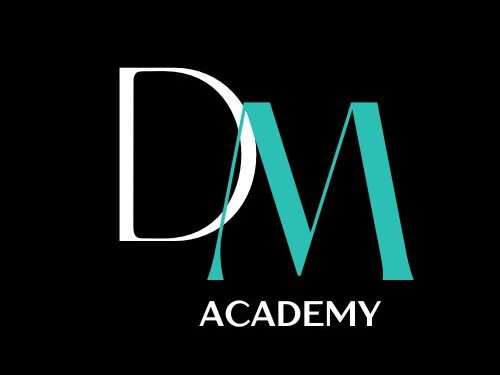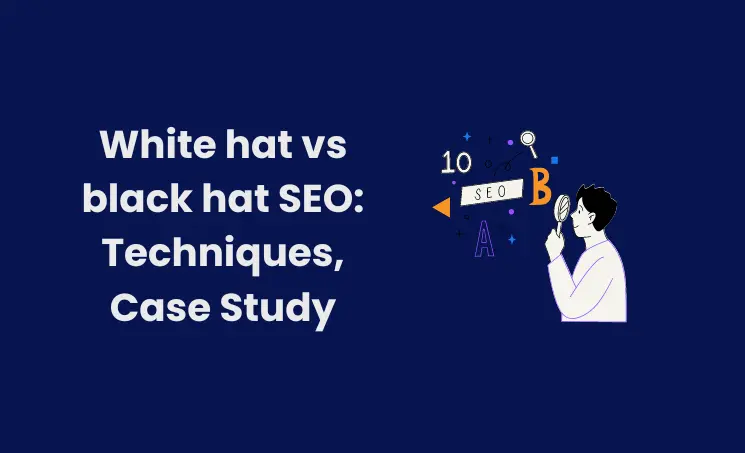Search engine optimization (SEO) is about making a website rank higher in search engines like Google. There are two main types of SEO white hat SEO and black hat SEO. White hat SEO means using ethical and long-lasting ways to improve a website’s rankings. The focus is on creating high-quality content that helps users. White hat SEO follows search engine guidelines and does not try to trick the system.
White Hat SEO Techniques
White hat SEO refers to ethical optimization strategies that focus on improving the quality and value of a website for users. Unlike black hat tactics, white hat SEO adheres to search engine guidelines and builds sustainable rankings through legitimate practices.
Optimizing Page Content
- Research target keywords and incorporate the most relevant ones naturally into page content. Avoid awkward over-optimization.
- Create useful, engaging content organized with appropriate headings and formatting.
- Include media like images, videos, infographics etc. Optimize with titles, file names.
- Update old content to keep it fresh and valuable. Add new pages to cover more topics.
Technical Optimization
- Ensure website pages load quickly by minimizing file sizes, enabling compression and caching.
- Make site mobile-friendly by using responsive design and checking site on mobile devices.
- Improve navigation and internal linking to help search bots crawl the site easily.
- Fix any broken links or other technical issues that affect site crawling.
On-Page Optimization
- Craft descriptive, keyword-rich page titles and meta descriptions for every page.
- Use heading tags (H1, H2, H3) properly to highlight important content.
- Include relevant keywords in URL structure where appropriate.
- Optimize image file names and alt text.
White Hat Link Building
- Earn high-quality backlinks from authority websites naturally through outreach and great content.
- Get citations on relevant local directories like Google My Business, Apple Maps etc.
- Build relationships with influencers in your industry to get mentioned.
- Create shareworthy content that website visitors want to link to.
- By focusing on enhancing the user experience and value through these ethical tactics, white hat SEO leads to sustainable results and avoids penalties. The focus is on building authority and trust through great content and outreach. These strategies take more time but generate lasting rankings.
The main goals of white hat SEO are to improve the user experience and follow search engine guidelines. While it takes more time and effort, white hat SEO leads to long-term success.
Black Hat SEO Techniques
- Keyword stuffing Jamming content with keywords artificially to game the system. Reads poorly for users.
- Hidden text/links – Using text that’s hidden to users but visible to search bots to manipulate relevance.
- Link farms – Networks of low-quality sites all linking to each other to boost rankings.
- Paid links – Buying backlinks rather than earning them naturally. This violates Google’s guidelines.
- Doorway pages – Creating pages optimized for specific keywords just to attract search bots then redirecting users elsewhere.
- Scraping content – Copying content from other sites without adding value. Duplicate content can lower rankings.
- Spamming comment sections – Leaving keyword-rich links on unrelated articles and forums. Often automated.
The main motive behind black hat SEO is to take “shortcuts” to higher rankings. But these methods provide a poor user experience and can cause long-term damage if caught. Search engines are constantly developing better detection methods as well.
Difference between White hat and Black hat SEO
One major difference between white hat and black hat SEO is the level of transparency. White hat SEO is open about optimization methods used and does not try to hide anything from search engines. Black hat SEO typically uses deceptive practices like cloaking and sneaky redirects to manipulate search bots while showing something different to users.
Google has very sophisticated methods to detect and penalize black hat tactics. In 2021, Google released three major algorithm updates aimed at curbing spammy practices – the Page Experience update, Spam update, and Core update. These updates specifically target sites using manipulative SEO and make black hat tactics very risky.
White hat SEO focuses heavily on E-A-T – expertise, authoritativeness, and trustworthiness. Optimizing these factors leads to better rankings. In contrast, black hat SEO exploits loopholes without caring about building reputation. As search engines get better at analyzing E-A-T signals, black hat sites will find it harder to rank.
Some examples of penalties search engines can impose on sites violating guidelines are:
-
- Lower rankings
-
- Removal from index
-
- Manual actions like spam warnings
-
- Loss of traffic and revenues
Recovering from an algorithmic or manual penalty can take months. This is why white hat SEO is the safer long-term approach for businesses who can’t afford sudden drops in traffic and sales.
While black hat SEO promises faster results, it almost never ends well. There are no long-lasting rewards, only temporary gains followed by penalties. For sustainable growth, white hat SEO is the way to go even if it takes more time and effort initially.
Black Hat SEO Case Study: J.C. Penney’s Link Scheme
In 2011, the New York Times wrote a report exposing a bad SEO tactic used by the well-known store J.C. Penney.
The report showed J.C. Penney ranked top in Google search for many popular keywords like “dresses” and “bedding.”
Looking closer, J.C. Penney’s website had many backlinks from irrelevant, low-quality sites. These links were made to trick Google’s system and boost J.C. Penney’s rankings.
The links were on sites about casino games, cheap drugs, and other spammy topics. The anchor text had target keywords stuffed in it – a classic bad SEO trick.
Due to these tricks, J.C. Penney ranked top for product keywords. This greatly increased their online visibility and traffic.
Google’s Response:
Once the report came out, Google took action. They investigated and punished J.C. Penney’s website for the bad tactics.
Google demoted J.C. Penney’s pages way down in the search results. This drastically impacted their traffic and sales.
J.C. Penney’s Reaction:
After being punished, J.C. Penney said an outside company did the bad SEO without their knowing. They stopped working with that company.
Lesson Learned:
This case shows the dangers of bad SEO just for short-term rankings. While it may briefly help, it leads to punishment and damage long-term.
It reminds businesses to focus on good SEO that adds value, like quality content and natural links from reputable sites.
In summary, white hat SEO focuses on the user, creates value, and plays by the rules. Black hat SEO aims to exploit loopholes and trick the system through deceptive means. For sustainable growth, ethical white hat practices are preferable. Though black hat SEO can work in the short-term, it is risky and can destroy trust.
Search engine algorithms are always evolving so there are no permanent shortcuts. By creating compelling, original content and building reputable backlinks, white hat SEO leads to trust and authority that cannot be faked. For individuals and companies who care about their reputation, white hat SEO is the way to go.
Author
-
A Digital marketing expert with 2 Years of hands-on experience in On-page SEO, Off-page SEO, and WordPress. Currently working as a SEO Interim Manager at 7Eagles. He Completed his Master Degree MBA Specializing in Marketing and Finance. He has 2 Years of work experience in Digital Marketing Field. He Handled projects in Saas, Healthcare, Finance, Real-estate. He is strong on Handling Y.M.Y.L (Your Money Your Life) Niche projects.




